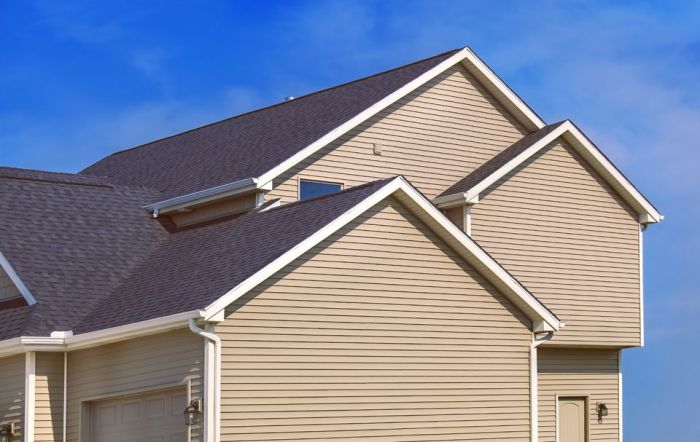Crafting a Durable Future: Global Siding and Roofing Innovations
Embark on a journey through the world of global siding and roofing, where quality craftsmanship meets innovative sustainability to shape the future of construction worldwide.
Delve into the diverse landscape of siding materials and roofing systems that cater to different climates and geographies, revealing the pivotal role they play in sustainable building practices.
Introduction to Global Siding and Roofing
Global siding and roofing refer to the materials and techniques used in construction to protect buildings from external elements such as weather, debris, and pests. Quality siding and roofing play a crucial role in ensuring the durability, energy efficiency, and aesthetic appeal of a structure.
The global trends in the siding and roofing industry are constantly evolving, influenced by factors like technological advancements, environmental concerns, and changing consumer preferences.
Importance of Quality Siding and Roofing
- Quality siding and roofing protect the interior of a building from water damage, mold, and rot.
- Proper insulation provided by quality materials can improve energy efficiency and reduce heating and cooling costs.
- Aesthetically pleasing siding and roofing enhance the curb appeal and overall value of a property.
- Durable materials ensure longevity and reduce the need for frequent repairs or replacements.
Role of Global Trends in Shaping the Siding and Roofing Industry
Global trends such as the growing focus on sustainable construction practices have led to the development of eco-friendly siding and roofing materials. Technological advancements have also introduced innovative solutions like solar panels integrated into roofing systems. Additionally, the demand for customizable and low-maintenance options has influenced the design and manufacturing processes in the industry.
Types of Siding Materials

When it comes to siding materials, there are various options available globally to cater to different preferences and needs. Popular choices include vinyl, wood, fiber cement, and metal. Each material has its own unique features and benefits, making it important to compare and contrast them to make an informed decision.
Vinyl Siding
- Low maintenance and easy to clean
- Available in a wide range of colors and styles
- Cost-effective option for homeowners
Wood Siding
- Natural and traditional look
- Can be painted or stained to change appearance
- Requires more maintenance compared to other materials
Fiber Cement Siding
- Durable and resistant to fire, rot, and pests
- Low maintenance and long-lasting
- Available in various textures that mimic wood or stucco
Metal Siding
- Highly durable and weather-resistant
- Modern and industrial look
- Can be recycled, making it an eco-friendly option
Innovative Sustainable Siding Materials
There are newer sustainable siding materials entering the market, offering eco-friendly alternatives to traditional options. Some examples include:
- Bamboo siding: A renewable resource that is durable and resistant to insects
- Recycled plastic siding: Made from recycled materials, reducing environmental impact
- Cork siding: Provides natural insulation and sound absorption properties
Roofing Systems around the World

Roofing systems vary greatly around the world due to differences in climate, geography, and cultural preferences. The choice of roofing material plays a crucial role in protecting buildings from the elements and maintaining the structural integrity of a property
.North America
In North America, asphalt shingles are the most common roofing material used. They are cost-effective, durable, and come in a variety of colors and styles. Metal roofing is also gaining popularity due to its longevity and energy efficiency.
Europe
In Europe, clay and concrete tiles are popular roofing materials due to their aesthetic appeal and durability. Slate is also commonly used in regions with abundant natural resources. Green roofs are becoming increasingly popular in Europe as a sustainable and energy-efficient roofing solution.
Asia
In Asia, materials such as bamboo, thatch, and palm leaves are commonly used for roofing. These natural materials are readily available and provide good insulation against the tropical heat. Metal roofing is also prevalent in urban areas due to its durability and resistance to typhoons.
Africa
In Africa, thatch roofs made from grass, reeds, or palm leaves are commonly used in rural areas. In urban settings, corrugated metal roofing is popular due to its affordability and ability to withstand the harsh climate conditions.
Australia
In Australia, metal roofing is widely used due to its ability to withstand extreme weather conditions, including bushfires. Colorbond steel is a popular choice for its durability and energy efficiency.
Installation and Maintenance Practices

Proper installation and maintenance of siding and roofing systems are crucial for the longevity and durability of buildings worldwide. By following best practices and conducting regular inspections, you can ensure the structural integrity of your property.
Best Practices for Installation
- Ensure the proper alignment and securing of siding panels or roofing materials to prevent water infiltration and structural damage.
- Use high-quality fasteners and sealants to secure materials and prevent wind uplift or water leakage.
- Follow manufacturer guidelines and local building codes for installation to ensure safety and compliance.
- Consider hiring professional contractors with experience in installing specific siding or roofing materials for optimal results.
Maintenance Tips for Longevity
- Regularly clean debris, dirt, and algae buildup from siding and roofing surfaces to prevent moisture retention and mold growth.
- Inspect for cracks, leaks, or loose components on a yearly basis to address issues promptly and prevent further damage.
- Trim trees and vegetation near your building to prevent branches from damaging siding or roofing materials during storms or high winds.
- Apply protective coatings or sealants as recommended by manufacturers to prolong the lifespan of siding and roofing systems.
Importance of Regular Inspections
Regular inspections are essential for maintaining sustainable building practices and ensuring the safety and longevity of siding and roofing materials. By identifying and addressing issues early on, you can prevent costly repairs and extend the lifespan of your building.
Final Review
In conclusion, global siding and roofing stand at the forefront of modern construction, blending tradition with innovation to create structures that endure the test of time while prioritizing environmental consciousness.
FAQ Summary
What are some common types of sustainable siding materials?
Examples of sustainable siding materials include reclaimed wood, recycled metal, and fiber cement.
How often should siding and roofing materials be inspected for maintenance?
It is recommended to have siding and roofing materials inspected at least once a year to ensure longevity and address any issues promptly.
What factors should be considered when choosing roofing systems based on climate?
Climate factors such as rainfall, temperature fluctuations, and wind speeds are crucial in selecting roofing systems that can withstand local weather conditions.




